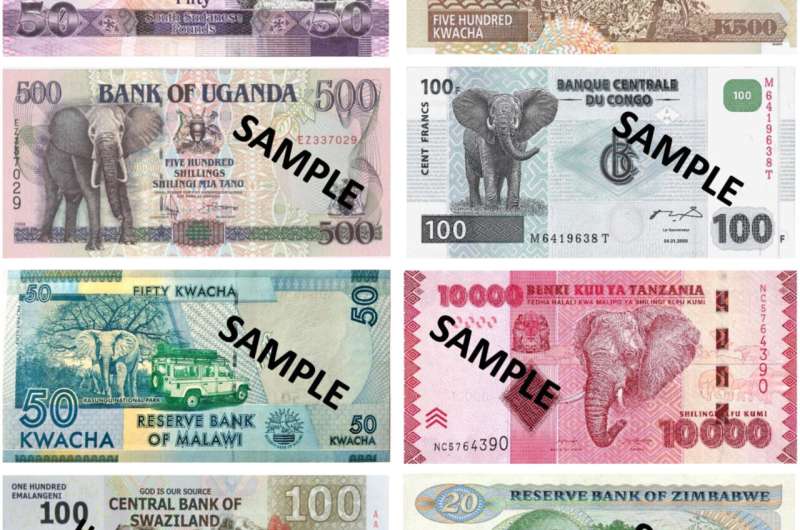This article has been reviewed according to Science X's editorial process and policies. Editors have highlighted the following attributes while ensuring the content's credibility:
fact-checked
peer-reviewed publication
trusted source
proofread
Cash and conservation: A worldwide analysis of the depiction of wildlife on money

If you were asked what images were depicted on each side of any of your country's banknotes, would you be able to confidently answer?
It's a question a team of Griffith researchers has posed as a way to explore just what flora and fauna that nations around the globe choose to represent on their currency, and the opportunities they present for conservation awareness and efforts.
In the new study published in People and Nature, lead author Beaudee Newbery and his supervisors, Associate Professor Guy Castley and Dr. Clare Morrison, investigated the representation of native fauna on 4,541 banknotes from 207 countries between 1980 and 2017, to identify geographic hotspots and taxonomic patterns, and determine whether threatened and endemic species were more readily represented.
They found:
- Native fauna were depicted on 15.2% of banknotes reviewed; these represented 352 unique species with a strong bias towards terrestrial species (89%);
- A dominance of bird and mammal species (83% combined)
- African banknotes had the highest mammal representation;
- Birds were favored in South America;
- Globally, threatened species were commonly depicted on banknotes with 30% of all imagery representing these species.
"For many of us around the world, using banknotes and coins is part of the everyday, despite the increasing trend towards digital transactions," Associate Professor Castley said.
"But in making these transactions, do we pay any notice to the currency itself and the images and artwork that are used in these designs?
"To get a sense of the 'value' that countries around the world might place on their native wildlife, our paper explored how wildlife imagery was used on banknotes.
"We were interested in finding out how often wildlife, specifically native animals, were depicted, but also which species were depicted."
The team recommended several avenues for further investigation to explore the relationships between perceived value and wildlife representation.
These included longitudinal studies of how representation changes over time; the inclusion of flora and/or coin imagery; identifying species-specific traits for selected wildlife; and examining the decision-making processes governing wildlife imagery on banknotes.
"Given the global biodiversity crisis, perhaps there may be a trend to showcase threatened species to highlight their plight and raise national awareness for these species. This study underscores the role that wildlife imagery on banknotes can play in shaping national identity and public perception of a country's biodiversity.
"By highlighting both the celebrated and threatened species, currencies around the world serve as a unique platform for promoting conservation awareness," Associate Professor Castley said.
More information: Beaudee Newbery et al, From cash to conservation: Which wildlife species appear on banknotes?, People and Nature (2024). DOI: 10.1002/pan3.10681
Journal information: People and Nature
Provided by Griffith University



















